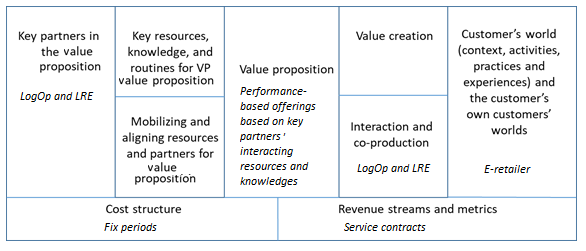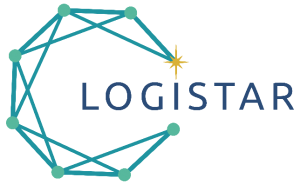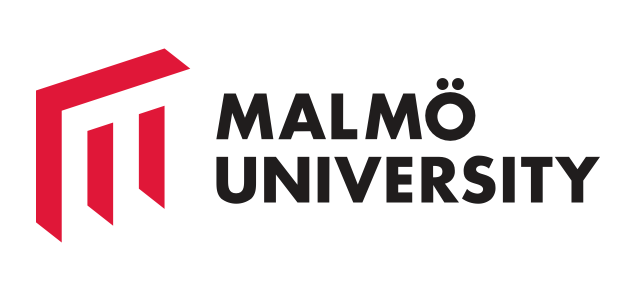“How come logistics operators’ return on investments is so low despite that warehouse operations are very cost efficient?”, is a strategic question that I and Helgi-Valur Fridriksson posed in a recent research paper (2020). Strategic warehousing questions are increasing in relevance with the ever-increasing e-commerce, and the focus on economically sustainable logistics operations. These issues are raised in the paper.
Logistics businesses thrive with increased e-commerce. Traditional logistics operators are challenged in last mile delivery services by many new types of service providers. Managing the growing number of small orders, large assortments, tight delivery schedules, un-precedent return flows and fluctuations in customer order volumes call for innovative solutions, and with care for environment. Warehouses and distribution centres have since long been a key resource for logistics providers’ sorting, consolidating, and different value-adding activities. Warehouse efficiency is optimized for cost and lead times. But the warehouse resource is seldom discussed as a root cause for other competitive advantages than low costs. The value offering to customers, from a business model perspective, relates to the ratio of return on investments, ROI, much more explicitly than cost efficiencies as such.
In that line of thought it is interesting to explore and analyse the warehouse as a part of a relational business model, i.e. how warehouse practices and capabilities enable the value proposition that offers the customer value co-creation. The warehouse is in focus of this business model.
Business models most often map how an organisation creates, distributes and captures value. Such descriptions are difficult given the complexity of logistics business networks in which the interdependence between network actors calls for knowledge of the service logic of how value is co-created. Of specific interest in the business model approach is to map relations, interactions, value propositions and understand related resources, practices and routines in the service network. The cost structure of resources in use, and not the least, the revenue streams enabled by the value co-creation are to be appreciated related to resources in use and interactions necessary for the value proposition. The assumption in this reasoning is that value, from a service logic perspective, is created by customers when using goods or services (Skålén 2018). The value propositions are offerings based on in-depth knowledge of how the services are to be consumed (Skålén et al. 2015). To put it in another way, value propositions are the formalized output of how resources, knowledge and routines are developed, matched, and aligned with and for the customer (Skålén et al., 2015).
The business model, Figure 1, is one way to sort out value proposition developments (Ojasalo and Ojasalo 2015; Ojasalo and Ojasalo 2018). Our study of the warehouse in the e-commerce context mapped an intriguing value network with important actors that contributed to the value co-creation by being key partners in the value proposition. Their resources and knowledge are mobilized and aligned in the value proposition.
Our study approaches the e-commerce logistics set up by mapping relevant actors and especially we focus on two major actors. The first one is a large logistics real estate (LRE) company that develops logistics property and the second is the e-retailer’s logistics operator (LogOp) for warehouse TPL services. LRE has a long-term relationship with the e-retailer in order to provide sustainable logistics property solutions. LogOp’s relationship with the e-retailer provides the competences that are enabling efficient e-commerce deliveries. The e-retailer is, thus the customer of both LogOp and LRE. The set-up is a complex value constellation of warehouse business that we theorized such as service logic business models, based on primary data as well as secondary data of business model components.

Theoretical insights can be drawn from warehouse value propositions in the e-commerce context. The warehouse potential for competitive advantages may be lost if we only look at warehouses for reasons of optimization and cutting costs. Our insights reach out to the on-going value co-creation processes between partners that not necessarily are acknowledged in the logistics literature, such as logistics real estaters and logistics real estate facility services. The value proposed to customers is to be co-created in order to make a difference in this service context, and that implies that practitioners need to understand their business model such as a relational act of business modelling. The modelling analysis elaborates what values are offered, to whom, how and in what way and with what consequences. The ideas that are forwarded in this paper are situated in the service-logic of e-logistics with value creation processes that involves the logistics operator and the e-retailer, and the logistics real estate company.
The initial question of the logistics operators’ low ROI despite that warehouse operations are very cost efficient, is a question for the business model map. Answers are to be found in lack either lack of co-creation or the value capture as seen in revenue streams and cost structures, but we do not fully understand these complex relationships. The value proposition configuration has relational aspects that we need to investigate the question further.
References
Borgström, B., & Fridriksson, H. V. (2020). How come logistics operators’ ROI is so low despite that warehouse operations are very cost efficient? A business model reconsideration of logistics facilities. Paper presented at the 32nd Annual Nofoma Conference, University of Iceland.
Ojasalo, J., & Ojasalo, K. (2018). Service logic business model canvas. Journal of Research in Marketing and Entrepreneurship. doi: 10.1108/JRME-06-2016-0015.
Ojasalo, K., & Ojasalo, J. (2015). Adapting business model thinking to service logic: An empirical study on developing a service design tool. In The Nordic School: Service marketing and management for the future, edited by Johanna Gummerus and Catharina von Koskull. Helsinki: Cers, Hanken School of Economics.
Skålén, P., J. Gummerus, C. Koskull, & Magnusson P., 2015. Exploring value propositions and service innovation: a service-dominant logic study. Journal of the Academy of Marketing Science 43 (2):137-58. doi: http://dx.doi.org/10.1007/s11747-013-0365-2.
Skålén, P., (2018). Service logic. Translated by Rikard Ehnsiö: Studentlitteratur.

Benedikte Borgström
Assistant Professor at the Department of Urban Studies, Malmö university in Sweden.
Share this article in your social media
Although we ensured to have up-to-date and accurate information, the publisher OPEN ENLoCC, nor the editor and the author, are not liable for errors and omissions. The publisher and the editor did not test products or services described and their inclusion does not imply any form of endorsement. By accepting advertisements in this publication, the publisher does not warrant their accuracy, nor accept responsibility for their contents. The publisher welcomes unsolicited manuscripts and illustrations but can accept no liability for their safe return. Reproduction (in whole or in part) of any text, photograph or illustration contained in this publication without the written permission of the publisher is strictly prohibited.
© 2022 OPEN ENLoCC All rights reserved.
 The publication of the European Review of Regional Logistics is supported by a grant of Wirtschaftsförderung Region Stuttgart GmbH (WRS).
The publication of the European Review of Regional Logistics is supported by a grant of Wirtschaftsförderung Region Stuttgart GmbH (WRS).
European regional review, Issue 2022/1
Other articles in this issue

Stuttgart Region’s position on hydrogen
Interview with Dr. Walter Rogg, head of the regional economic development corporation WRS Sehr geehrter Herr Dr. Rogg,With combustion engines on the way out, why
ST4W: Data flows for smart waterways
The ST4W (Smart Track for Waterways) project is supported by the INTERREG NWE programme of the European Union. It aims at promoting and increasing the
SMART-CORRIDORS project
Smart Supply Chain and Intelligent Intermodal Corridor Management for the China-Europe land-sea express line.” Recent research and business practice pinpoint that the integration of new
Promoting Hydrogen in Valencia
On 13 October 2021, the “H2VLC Valencia Hydrogen Valley” project was presented at the Valencia City Council headquarters, with the participation of more than 40

MAHEPA: Towards environmentally friendly hybrid-electric short haul air transportation
The Challenge The future competitiveness of the aviation sector largely depends on its environmental footprint. With the aviation industry responsible for 2 % of all

LOGISTAR – transport operations by horizontal collaboration, relying on real-time data
The LOGISTAR objective is to allow effective planning and optimizing of transport operations in the supply chain by taking advantage of horizontal collaboration, relying on
Hydrogen for transport in Stuttgart Region
Why is hydrogen a topic in Stuttgart Region? Stuttgart Region is a high-density area in the center of Europe. Its 2.8 million inhabitants rely heavily

FEDeRATED: a viable network of platforms for data sharing in freight transport and logistics
On 24th of November 2021 the Mid Term Review meeting of the FEDeRATED project was held at the Codognotto headquarters in Salgareda (Italy). The project

A relational business model of e-logistics facilities
“How come logistics operators’ return on investments is so low despite that warehouse operations are very cost efficient?”, is a strategic question that I and
19th European Transport Congress of the EPTS Foundation e. V. held in Maribor
On 7 and 8 October 2021, the University of Maribor hosted the international scientific congress “European Green Deal – Challenges and Solutions for Mobility and

Stuttgart Region’s position on hydrogen
Interview with Dr. Walter Rogg, head of the regional economic development corporation WRS Sehr geehrter Herr Dr. Rogg,With combustion engines on the way out, why
ST4W: Data flows for smart waterways
The ST4W (Smart Track for Waterways) project is supported by the INTERREG NWE programme of the European Union. It aims at promoting and increasing the
SMART-CORRIDORS project
Smart Supply Chain and Intelligent Intermodal Corridor Management for the China-Europe land-sea express line.” Recent research and business practice pinpoint that the integration of new
Promoting Hydrogen in Valencia
On 13 October 2021, the “H2VLC Valencia Hydrogen Valley” project was presented at the Valencia City Council headquarters, with the participation of more than 40

MAHEPA: Towards environmentally friendly hybrid-electric short haul air transportation
The Challenge The future competitiveness of the aviation sector largely depends on its environmental footprint. With the aviation industry responsible for 2 % of all

LOGISTAR – transport operations by horizontal collaboration, relying on real-time data
The LOGISTAR objective is to allow effective planning and optimizing of transport operations in the supply chain by taking advantage of horizontal collaboration, relying on
Hydrogen for transport in Stuttgart Region
Why is hydrogen a topic in Stuttgart Region? Stuttgart Region is a high-density area in the center of Europe. Its 2.8 million inhabitants rely heavily

FEDeRATED: a viable network of platforms for data sharing in freight transport and logistics
On 24th of November 2021 the Mid Term Review meeting of the FEDeRATED project was held at the Codognotto headquarters in Salgareda (Italy). The project

A relational business model of e-logistics facilities
“How come logistics operators’ return on investments is so low despite that warehouse operations are very cost efficient?”, is a strategic question that I and
19th European Transport Congress of the EPTS Foundation e. V. held in Maribor
On 7 and 8 October 2021, the University of Maribor hosted the international scientific congress “European Green Deal – Challenges and Solutions for Mobility and
